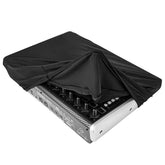Piano Practice Guidelines: Steps and Methods for Effective Improvement
(1) Practice Steps
The pianist needs to be clear about what they need to practice first.
In almost any piece of music we play, there are usually one or two places where you consciously feel that you have not reached your ideal level and need improvement. Therefore, in practice, these challenging sections should be given priority, focusing on training those difficult parts.
After addressing the challenges, it's essential to consider other practice content. Often, practitioners fail to complete assignments, and when asked why, they may have practiced but only focused on mastering one or two pieces. The rest were left untouched. In reality, such practice is not only inefficient but also hinders personal skill development.
While it's not possible to perfect every piece during practice, it's crucial to at least review all the pieces you've learned. You don't need to play them perfectly, but you must give them some attention.

Gradually, you'll discover that you can achieve what you initially thought impossible. With consistent effort, the quality and quantity of your practice will improve. As a result, the content of your piano practice will become more diverse.
(2) Practice Methods
Piano playing requires strong technical skills, and employing scientific methods during practice is essential to effectively achieve practice goals.

[Slow Practice] Slowing down is the preferred method for addressing various technical difficulties. Slowing down the speed reduces the difficulty of the technique. Mastering this skill and gradually increasing the speed leads to success.
[Hand Separation Practice] Practicing hands separately helps focus attention on more specific requirements, clarifying the individual tasks of each hand while ensuring accurate and flawless coordination when played together.
[Variation Practice] This trains the brain's ability to command and control fingers, achieving the goal of overcoming technical challenges.
[Listening Practice] Based on the musical image, comprehensive understanding includes aspects such as pitch, rhythm, chords, dynamics, tempo, and playing techniques.







